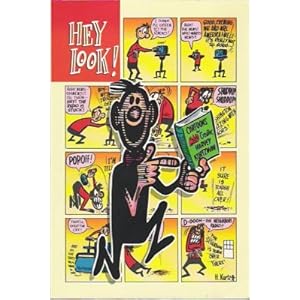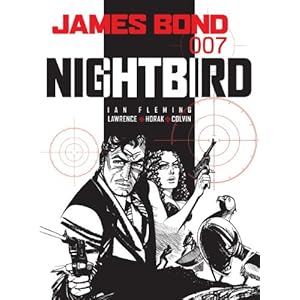
A few months ago, I reread a collection of 1990s Batman comics and said that I owed it to myself to revisit some Superman comics of around the same period. The result was considerably more entertaining, but these are still flawed so badly, with lots of potential fun sucked out of them by a contemporary desire for realism and relevance, "updating" beloved characters into new versions that did not take. I can't imagine any reader in the present-day checking out this collection and not being utterly baffled by who everybody is.
For example, Lex Luthor is pretending to be dead, since his old, bald body was dying of radiation poisoning. So he had himself cloned into a younger body with a mane of red hair and is passing himself off as Luthor's good-natured son, on the side of the angels. Supergirl is not Superman's cousin from Krypton, but a shapeshifting alien called Matrix who just decides to look like a blonde in a miniskirt. Brainiac is not an android who shrinks people, but a Snidely Whiplash mustache-twirler with psychic powers. These aren't Superman comics from twenty years ago, they're Superman comics from a parallel universe where everything is even more stupid.
Okay, with those caveats in place, this book reprints an eight-part story in which Brainiac brings an artificial planet called Warworld into our solar system to invade Earth, and Superman rallies all of our planet's superheroes into a massive army to fight back. The book is still infected with comic book dumb - for example, with hundreds of aliens roaming the streets of Metropolis, the city is defended by about a dozen of the "street-level" heroes like Batman and Blue Beetle without actual powers jumping around and throwing karate chops, and not, you know, thousands of army troops with machine guns - but it's still a little entertaining if you put your brain in neutral. The ongoing gag that Guy Gardner, a boorish thug who is, nevertheless, fearless enough to be charged with a Green Lantern ring, gets burned by the verbal arrows of every other superhero gets old quickly, but it's funny, watching him ignore everybody else and flirt with the galactic sex goddess Maxima anyway.
I was most impressed by how well the Superman editorial office actually handled the crossover. The Batman book that I read, Contagion, didn't feel like it had any kind of guiding hand whatever, with artistic quirks and poor modeling changing the appearance of characters from one page to the next, and chapters that felt like they were flown in from another publisher entirely. Even with different writer and artist teams taking over every twenty-odd pages, this does feel cohesive and planned correctly. Plus, as a reprint, it's done right, with the original covers of the issues and both notes and behind-the-scenes details from the creators.
Honestly, I was no longer the target audience for this material when it was published, and it still has only minimal interest to me, but, when compared to the garbage from the Batman editorial team, it was certainly nice to see that the story was told as effectively as it was, and packaged as well as it was. If you don't have a taste for Superman stories, then this probably won't convince you, but if you like the DC Universe of the period, then this is recommended.





